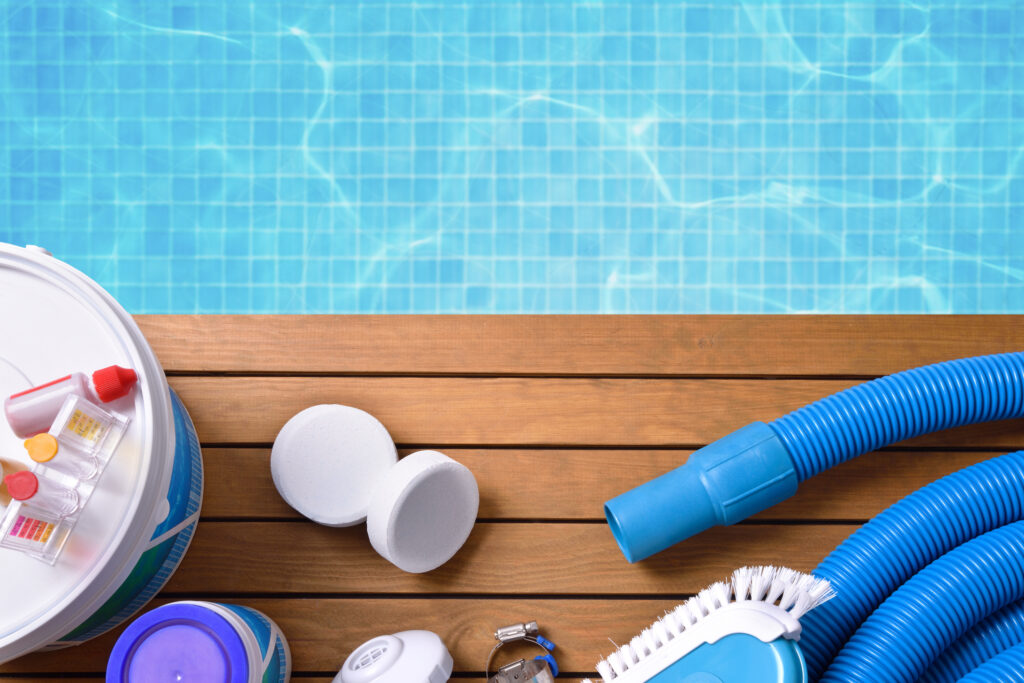A sparkling and inviting pool is a refreshing oasis during hot summer days. However, achieving and maintaining crystal-clear water requires more than regular cleaning and filtration. By understanding the science behind it, pool owners can maintain optimal water quality, prevent common problems, and create a healthy swimming environment.
pH Balance: The Foundation of Water Chemistry
Maintaining proper pH balance is fundamental to pool water chemistry. pH is a measure of how acidic or alkaline the water is and is expressed on a scale from 0 to 14. The ideal pH range for pool water is between 7.2 and 7.8, slightly on the alkaline side. When the pH is outside this range, it can cause various issues. A low pH (below 7.2) leads to corrosion of pool equipment, eye and skin irritation, and cloudy water. Conversely, a high pH (above 7.8) can result in scale formation, reduced sanitizer effectiveness, and cloudy water. Regularly testing the pH levels and making necessary adjustments using pH increasers or pH reducers is essential for maintaining water balance.
Sanitizers: Keeping the Water Clean
Sanitizers play a vital role in killing bacteria, viruses, and algae to keep the pool water clean and safe for swimmers. The most common sanitizers used in pools are chlorine and bromine. Chlorine is effective and widely used, available in various forms such as tablets, granules, and liquid. Bromine, an alternative sanitizer, is commonly used in hot tubs and indoor pools. Maintaining appropriate sanitizer levels is crucial to prevent the growth of harmful microorganisms and ensure water safety. Regularly testing sanitizer levels and adjusting as needed is essential for effective sanitization.
Total Alkalinity: Balancing the Water
Total alkalinity measures the water’s ability to resist changes in pH. It acts as a buffer, stabilizing the pH levels and preventing rapid fluctuations. The ideal range for total alkalinity in pool water is typically between 80 and 120 parts per million (ppm). Low total alkalinity can lead to pH swings, corrosion, and cloudy water. High total alkalinity can cause scale formation, cloudiness, and reduced sanitizer effectiveness. Adjusting total alkalinity using alkalinity increasers or decreasers helps maintain pH stability and overall water balance.
Calcium Hardness: Protecting Pool Surfaces
Calcium hardness refers to the amount of dissolved calcium in the water. The recommended range for calcium hardness in pool water is typically between 200 and 400 ppm. Low calcium hardness can result in the water becoming corrosive, leading to damage to pool surfaces and equipment. High calcium hardness can cause scale formation on pool surfaces and equipment, resulting in reduced efficiency and potential damage. Regular testing and adjusting calcium hardness levels using calcium hardness increasers or reducers help protect pool surfaces and maintain proper water balance.
Regular Water Testing and Maintenance
Regular water testing is crucial for maintaining optimal pool water chemistry. Testing kits or electronic testing devices can measure pH, sanitizer levels, total alkalinity, and calcium hardness. It’s recommended to test the water at least once a week during the swimming season and adjust the chemical levels accordingly. Additionally, proper pool maintenance practices such as regular cleaning, filtration, and water circulation help maintain water clarity and prevent the buildup of contaminants.
Balancing Chemical Interactions
Understanding the interaction between different chemicals is important to maintain proper water chemistry. For example, high levels of chlorine combined with high pH can lead to chlorine inefficiency, commonly known as chlorine lock. This occurs when the chlorine becomes less effective in killing bacteria and algae. Balancing the chemical interactions by maintaining appropriate pH and sanitizer levels helps maximize the effectiveness of pool chemicals and ensures a clean and safe swimming environment.
Consideration of Environmental Factors
Environmental factors such as sunlight, rain, temperature, and pool usage can impact pool water chemistry. Sunlight can deplete chlorine levels, requiring additional sanitizer dosing. Heavy rain can dilute pool water, affecting pH and sanitizer levels. High temperatures can increase evaporation, affecting the overall water balance. Regular monitoring and adjusting of pool chemicals based on these environmental factors help maintain optimal water quality.
Understanding the science of pool water chemistry is essential for achieving and maintaining sparkling, clean, and safe pool water. By taking the time to understand and apply pool water chemistry principles, pool owners can enjoy the benefits of a refreshing and inviting pool all summer long.


Comments are closed.